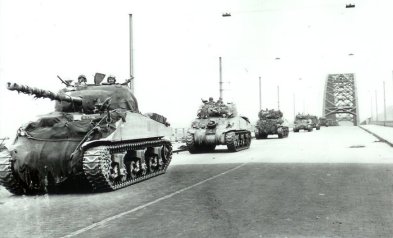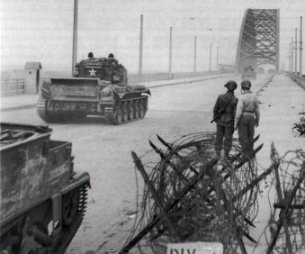|
|
|
|
|
Operation Market Garden, leading to the liberation of Nijmegen and its environs, started on 17 September 1944. It was a concerted action of American, British an Polish Airborne and Ground forces. After initial attacks by hundreds of heavy bombers, the airborne landings (Operation Market) started at about 13.00 hrs. around the cities of Eindhoven, Arnhem and Nijmegen. The task of the paratroopers, landing in the vicinity of Groesbeek, Overasselt and Grave was four-fold; occupying the Groesbeek heights, capturing the Maas bridge at Grave intact, getting hold of the bridges across the Maas - Waal canal (at Heumen, Malden and Neerbosch) and occupying the, strategically very important bridge, across the Waal at Nijmegen. |
|||
|
|
By capturing a number of bridges in a rapid action, the Americans were to give free passenge to the British ground Army from Leopoldsburg (Belgium) to Arnhem (Operation Garden). On 18 September, some hundreds of gliders with supplies and material landed at Klein Amerika and Knapheide, near Growesbeek. The Americans could recapture the landing zone from the Germans just in time. Via the bridge at Grave and the small lock bridge at Heumen, which was captured intact, the Rijksweg and the Scheidingsweg, the British troops headed for Nijmegen where they, with serious delay, arrived on the 19th of September. On the same day the decision was taken to cross the river Waal the following day at 13.00 hours, so that the British troops, who were fiercely fighting in Arnhem, could be reached in time. |
||
|
|
||
|
|
On September the 21st, the Irish Guards advancing to Arnhem got stuck in the Betuwe. Two days later not only 350 gliders landed, with reinforcements and material, at Overasselt but also Polish Paratroopers who, due to the bad weather, had not been able to jump at Driel on September the 21st. On September the 25th, after nine days of fierce fighting, the British and Polish troops stationed in the vicinity of Arnhem and cut off from the corridor all the time, had to abandon their positions. Nijmegen remained front city for seven more months; Arnhem was liberated in April 1945 |
||
|
Read more here |
|||




